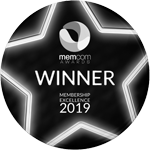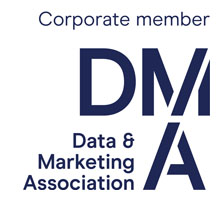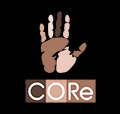Mind the inclusion gap: Why your company’s DI&E policy isn’t enough
25 February 2021
Is the research industry a good place for women or people from minority groups to work? The answer is… it depends on who you ask. Most people outside of these protected groups (straight, non-disabled, white men) would say that it is. People within these groups? Perhaps not so much.
The following commentary was commissioned to reflect the views of the MRS Diversity, Inclusion & Equality Council.
Most research companies these days have DI&E (diversity, inclusion and equality) policies, and also make sure that they comply with legal requirements around these issues. But having a policy doesn’t mean that discrimination isn’t happening. It’s just that it’s not typically happening to cis, straight, non-disabled, middle-class, middle-aged white men, so they are less likely to be aware when it is happening to anybody else – or appreciate the devastating impact it can have.
What is the inclusion gap?
There are two elements to the inclusion gap in the market research industry:
- The difference in perceptions and experiences between straight, non-disabled white men and members of protected groups
- The gap between the good intentions and positive work done by industry leaders, and the everyday experiences of people in protected groups
The perception and experience gap
The recent survey by the MRS of more than 400 people working in the industry revealed a gap in experiences and perceptions of diversity and inclusion between straight, non-disabled, white men (white men for short) - and those in other groups.[1] Although sample sizes in some groups were relatively small, there were significant differences in a number of measures. The report found the following:
- White men have better experiences at work: White men were most likely to say that they are given opportunities and resources to work flexibly, to feel like they belong at their company, and to believe that their unique characteristics are valued. They are least likely to have had colleagues taking credit for their work, to have been insulted or demeaned, or to have been excluded from events or activities. They are also significantly less likely to consider leaving their jobs due to concerns linked to DI&E.
- White men are less likely to be aware of issues around DI&E: They are more likely to say that most employees in their organisations feel comfortable being themselves; that DI&E is taken seriously in their organisation; and that managers are fair on hiring and career advancement. They are also more likely to believe that women and minority groups are well represented at all levels of the organisation and that the company workforce represents the diversity of the community.
The issues of DI&E play out differently for everyone; awareness of intersectionality tells us that people in multiple protected groups have different experiences than people in just one. If we are in a group that is having a better time at work than others, it isn’t surprising that we also have a more benign view of how well the organisation is performing on issues of DI&E. And if we think there isn’t a problem, how will we be mobilised to advocate for change?
The leadership gap
Nobody would deny that the MRS CEO Pledge, established two years ago, is a positive move. So far, 25 research company leaders have signed up and committed to working towards safer and more representative workplaces. The pledge includes: publishing pay statistics annually, working towards government targets for women and ethnic minorities at board level and improving recruitment practices. The recent CEO Pledge Progress Report is full of inspiring examples of how organisations are working towards change.
But even while all of this good stuff is happening, people who work in our industry still feel excluded and discriminated against. The CEO Pledge is a great first step, but the hard work is in what follows on from this commitment – having the difficult conversations and addressing individual issues, so we can evolve how our workplaces function, for everyone. One of the most shocking statistics from the survey was that only 9% of ethnic minority researchers believe that they are treated fairly and have the same opportunities as other colleagues. And if there was any doubt that discrimination exists, the verbatim comments sections of the survey were full of the lived experiences of people in our industry who feel they are not being treated fairly. People who get talked over in meetings, left behind for promotions, left out of conversations, disregarded, belittled and patronised.
Why is there an inclusion gap?
So why do these gaps exist? The gap between the perceptions of white men and everyone else? And the gap between the positivity of the CEO Pledge Progress Report, and the experiences reported in the MRS survey?
There are a number of issues here. Firstly, the real issue for DI&E isn’t about being numerically in the majority, or being white, male or straight; it is about how power is structured. Even if they have the best intentions, people in positions of power can be out of touch with people further down the organisation. And although power tends to be concentrated amongst white men, people from any background can be in positions of power and be out of touch. Some would say that Barack Obama is the epitome of ‘woke’ but in his latest book, A Promised Land, he talks about how dominant male behaviour in the White House was serving to alienate and silence some of the women on his team and how he had to face up to the fact that his own behaviour was contributing to the problem.
“Ironically, one aspect of management that took me longer to learn than it should have was the need to pay close attention to the experiences of women and people of colour on the staff.” Barack Obama
So one of the reasons for the gap between the positive outlook of the CEO report and the grim reality of the survey could be that people in leadership roles (who are not all male or white) are just not as aware of the issues on the ground as they could be. This goes hand in hand with the issue of visibility. As a leader, if your peer group is made up of particular demographic (typically white, male) then you aren’t exposed to the lived experiences of people from other groups.
Another reason may be around communications more generally; leaders sometimes feel that they must give their teams and stakeholders positive messages, because it is motivational; this is true to an extent, but pressure to always be positive comes with its own issues. Leaders can feel guilty about failure, so don’t want to admit that there is a real problem. Additionally, they may be conditioned to believe that optimism and positivity is the only acceptable face of leadership to show to the market, even if it’s not congruent with their internal (perhaps more vulnerable) self.
Another potential explanation for both gaps is that society tends to frame prejudice as something that is bad, or that only bad people do. This leads to denial. In her book, White Fragility, which is based on her experiences of delivering corporate diversity training in the US for more than twenty years, Robin DiAngelo says that all humans are prejudiced and we all discriminate. We can’t help it. When we have little experience of people from groups to which we don’t belong, we pick up messages from our surrounding culture and use them to form thoughts and feelings, which we project onto all members of the group. Then racism (sexism, ageism, ableism, homophobia…) occurs when collective prejudices are backed by legal and institutional structures.
“Suggesting that white people have racial prejudice is perceived as saying that we are bad and should be ashamed. We then feel the need to defend our character rather than explore the inevitable racial prejudices we have absorbed, so that we might change them.” Robin DiAngelo
It can be very uncomfortable for leaders to recognise and confront prejudices, in themselves and others, so it is helpful to reframe it as an inevitable part of the human condition, and focus instead on how it leads to both individual and structural discrimination. Doing so can enable people to empathise, without defensiveness, about how other people experience the world.
Another explanation is the extent to which organisations are engaging with solutions. Shazia Ginai, CEO of Neuro-Insight and member of the MRS DI&E Council, says that since the resurgence of the Black Lives Matter movement, she has come across a wide variety of methods. Often, companies take a top-down approach and fail to involve or consult people at all levels in the organisation.
“I’ve spoken to so many people who have proudly said they are working on DI&E and so many others who are frustrated that there isn’t enough happening in their organisations. Sometimes this is because there isn’t enough, and sometimes it is because it is done by a small group and not everyone can see what is happening.” Shazia Ginai
How to close the inclusion gap
If we are to narrow this gap, we need market research leaders to step up and consider the following five actions:
- Allocate budget to DI&E. Leaders need to prioritise the issue and take a systematic approach. In many organisations, there is no cohesive DI&E initiative. Often it is a bunch of disparate groups, driven by volunteers, with no budget allocated. Until this changes, progress will inevitably be slow and fragmented.
- Sign up to the CEO Pledge. But recognise that this is only the beginning of the work, and not a ‘tick box’ that means you can file DI&E away as done.
- Ensure that organisational DI&E initiatives are put in place with steering groups made up of people from all levels of the organisation. This would enable people to feel they are part of the solution. It would also enable more bottom-up and two-way communication, and help to create a culture where people feel supported to share their diverse lived experiences.
- Put robust processes in place that make it easier and safer for people to report discrimination. The survey revealed that more than half of people who had experienced or witnessed discrimination or inappropriate behaviour did not raise the issue with senior leaders or HR. This was primarily because they didn’t trust the processes of escalation. Not only is this essential to improve people’s working lives, but will also be harder to get people to come forward, join steering groups and share their experiences until they feel confident that they will be believed and that action will be taken.
- Leaders must be brave enough to be vulnerable, and humble enough to listen. This doesn’t mean we can’t give motivational and positive messages to our teams but, rather than being relentlessly upbeat, it is more authentic to admit that there are problems, and then round off the narrative with a message of hope and action towards solutions. And we can’t be optimistic about the solution until we can empathise and understand the gravity of the problem.
The picture is not all bleak. Overall, the survey found that most researchers report positive experiences, and that there was a great deal of awareness of the issues. Young people, in particular, reported caring deeply about inclusion and seeking workplaces that reflect their values. They are also prepared to take action to act as allies and champions. If leaders step up and also support young people to drive change, there is great potential to narrow the diversity gap. If those of us who don’t suffer directly from discrimination can become allies, we will all reap the benefits of fair and inclusive workplace culture. Let’s all embrace this challenge and make sure that, before too long, everybody within our industry will be able to say that it’s a great place to work.
[1] The survey looked at the issue of intersectionality by breaking down respondents into three groups.
- Type 1: White, male, straight and non-disabled.
- Type 2: White, female, straight and non-disabled.
- Type 3: Anyone belonging to a minority (based on their answers to questions about ethnicity, sexuality, faith and/or disability)
Get the latest MRS news
Our newsletters cover the latest MRS events, policy updates and research news.











